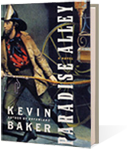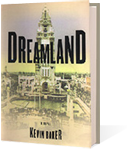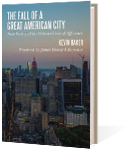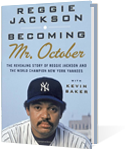The strategists who wanted greater ideological purity
may have gotten more than they bargained for.
DURING the tumultuous wartime summer of 1944, President Franklin D. Roosevelt fielded an incredible proposal. His Republican opponent from 1940, Wendell Willkie, would quit his party and join the president in a new, liberal coalition.
Both men had grown deeply frustrated with the conservative factions of their own parties. The more isolationist Republican “Old Guard” had just blocked Willkie’s bid to win his party’s nomination again, and scoffed in particular at his idea for a postwar “world government.” A coalition, Roosevelt told a close adviser, would enable the Democrats “to get rid of its reactionary elements in the South, and to attract to it the liberals in the Republican Party,” while “leaving the conservatives in both parties to join together as they see fit.”
Roosevelt elaborated: “We ought to have two real parties — one liberal and the other conservative. As it is now, each party is split by dissenters.”
He was wrong. The idea of two ideologically consistent, European-style parties that offer voters clear-cut choices may sound logical. But our federal government has always worked best when our major parties were instead messy, exasperating contradictions, sprawled across many different regions. In fact, that’s almost the only time our government has ever functioned well.
The former opponents’ dreams of one big liberal party were soon dashed by both men’s deaths, but what Roosevelt and Willkie wanted has largely come to pass. The Republican Party has shifted hard to the right on virtually every issue and moved its base to the South. The Democrats remain more ideologically diverse, but are increasingly isolated along the Atlantic and Pacific coasts, plus a few sections of the Midwest and the Prairie States.
The fruits of this realignment were on display last week, in the latest Republican debate. The candidates focused solely on a serious foreign threat, much like Roosevelt and Willkie’s 1940 race, which was combative but civil. By contrast, the Republicans’ nine top candidates offered almost nothing beyond ceaseless vituperation of President Obama and the leading Democratic candidate, Hillary Clinton.
The debate was billed as a battle royal between the party’s rebels and its establishment, but in fact they differed very little in their views. Previous debates on domestic issues have revealed even greater ideological consistency, no matter who “wins” them. The debates have drawn some terrific television ratings, but they rarely seem to affect the nominating contest itself much, and how could they? The candidates agree on almost everything.
This time around, Gov. Chris Christie of New Jersey was the most adamant advocate of the Republican consensus when he called the president of the United States a “feckless weakling” and asserted that both Mr. Obama and Mrs. Clinton had “betrayed the American people.”
It is impossible to imagine any of these candidates working hand in hand with a Democratic administration in the best interests of America. It would be tempting to say that all this marks a new low in the annals of our democracy, save for the fact that this is how it has functioned, or failed to function, for much of its existence.
Political analysts attribute our current stalemate to a number of likely factors: the corrupting influence of big money; the fall of the old party bosses and the advent of primaries; and now the rise of a social media that is centered on forming virtual communities of like-minded people. All true, but the heart of the matter is this: The system is not supposed to work.
With a few notable exceptions, the men who drafted the American Constitution were much more concerned about the excesses of power than getting things done. They threaded it with checks and balances that made it easy for a determined opposition to stop any agenda. They considered parties to be an inherent evil.
Once they stepped down from the picture frame and walked into the hurly-burly of actual political life, though, the founding fathers spent much of their time hiring professional slanderers to accuse one another of treason, malfeasance and perversion.
Nor did they stop at libel. When their dominance was threatened, John Adams and his Federalists passed the Alien and Sedition Acts of 1798, which tried to limit immigration and made malicious criticism of the president a felony. Thomas Jefferson’s Democratic-Republicans responded with the doctrine of “nullification,” claiming the right of the states to simply ignore any national laws they thought infringed on their sovereignty.
ADVERTISEMENT
Advertisement
Continue reading the main story
The political was always personal and often dangerous. Election Days regularly turned to violence and shivaree; one such extravaganza in Baltimore may have cost Edgar Allan Poe his life. (One theory holds that he was kidnapped and plied with liquor by a political faction that wanted him to vote again and again as a “repeater.”) Debate was vigorous, but unilluminating. The Federalist congressman Roger Griswold of Connecticut once attacked his Republican colleague, Matthew Lyon of Vermont, with a wooden cane, beating him about the head on the floor of the House. Lyon, later jailed under the Sedition Act, defended himself by grabbing a pair of iron tongs out of the fireplace.
Politicians of the highest rank — DeWitt Clinton, Sam Houston, Andrew Jackson — routinely fought duels, and sometimes murdered one another. In the most infamous incident, as any fan of the Broadway show “Hamilton” can tell you, Aaron Burr, then the sitting vice president (spoiler alert) shot and killed Alexander Hamilton, one of the architects of our liberty.
Things tended to get done only when one party, like the Federalists or the Whigs, was driven almost entirely out of government — and then what was done created new resentments and stalemates. Hamilton and the Federalists established a central bank in 1791, only to see James Madison and the Republicans let its charter expire in 1811, throwing the country into financial turmoil. Madison re-established a central bank five years later, only to see Jackson and his Democrats let its charter expire again, 20 years later, setting off a horrific depression.
Political leaders added huge sections of land to the Union, by purchase or conquest, only to see slave owners and yeoman farmers bitterly contest control over them. The Constitution had been written to accommodate slavery, but slavery further bolstered the gridlock already written into the system.
Young America was a nation possessed of immense energies but no compass, always threatening to sail off into chaos. Parties made coalitions across regions, but these always proved unstable, or ineffectual. The Compromise of 1850 brought a shaky and troubled peace on slavery for all of four years. Soon after, a Democratic congressman, Preston Brooks of South Carolina, famously surprised a Republican senator, Charles Sumner of Massachusetts, at his desk in the Senate chamber, and caned him senseless. Northern abolitionists funded John Brown’s attempt to start a slave rebellion at Harpers Ferry, Va., in 1859; the same year, South Carolina congressmen and their state’s governor seriously considered a plot to seize control of the Capitol by force, if the Republican representative John Sherman, of Ohio, was elected speaker of the House.
All this was followed by the ultimate party deadlock: In two wrenching conventions in 1860, the Democratic Party split and offered two regional candidates for president. This ensured the election of Abraham Lincoln, and ushered in the Civil War, which killed not just some political party but one in every 40 Americans.
The old system began to change only after the war with the rise of the Populists, a genuine people’s movement that challenged single-party dominance in Democratic Texas and the rest of the South — and in Kansas, Nebraska and other Republican strongholds on the Great Plains. The Populists were eventually lured into the Democratic Party by William Jennings Bryan, but the Progressive movement soon gave the Republicans their own house radicals.
Both major parties now had their own liberal and conservative wings, creating what were in effect four major parties and a national legislature full of ever-shifting coalitions, usually across party lines.
This arrangement defied pretty much every civics textbook, every political theorist’s idea of how government should function. It was also when our national government began to work. From roughly 1900 to 1990, when this “four-party system” was in existence, the United States emerged as the world’s leading power and reached its economic zenith. We fought and won two world wars and the Cold War; built a social welfare state; established a stable national banking system; won the vote, and then equal rights for women, African-Americans, Hispanics and Asian-Americans; rebuilt Europe; constructed a formidable national infrastructure; instituted environmental safeguards and preserved millions of miles of wilderness; and generally created the freest, most prosperous, major multicultural nation the world has ever seen.
Plenty of other factors contributed to all these achievements, of course, but the fluid new party system in Washington accommodated and facilitated the country’s growth as it never had before. The constantly shifting coalitions in Washington forced a certain productive civility into our politics. You were much less apt to hit members of the opposition with a cane, or a fire iron — or to shoot them in Weehawken — when you knew you might need them to help get your bill passed next week.
The fickle nature of these Congresses often bothered presidents, but the cannier ones quickly learned how to use such shifting alliances to their advantage. Strange bedfellows continued to be the rule after Roosevelt and Willkie. Both President Harry S. Truman and President Dwight D. Eisenhower recruited support from internationalists in each other’s parties. Eisenhower also built the largest public works program — the Interstate highway system — in history. President John F. Kennedy slashed taxes and rooted out corruption in labor unions. Republicans joined Northern Democrats in passing Lyndon B. Johnson’s landmarks civil rights legislation. President Richard M. Nixon gave us the Environmental Protection Agency, went to China, and proposed a guaranteed national income, while Ronald Reagan got Southern Democrats to back his tax policies and military buildup.
Congressional investigations were often bipartisan, timely and incredibly effective. In the 1960s, committees looking into allegations raised in books — books! — such as Rachel Carson’s “Silent Spring” and Ralph Nader’s “Unsafe at Any Speed,” produced not only concrete recommendations but also lifesaving actions within a few short years.
Of course, the old cross-party crowd was not always wise. Both parties reached across the aisle to foment the original “Red Scare” after World War I, slammed shut the golden door of immigration in 1924, ran McCarthyite witch hunts against gay people and suspected Communists in the 1950s, and generally supported a host of racist and sexist policies. Our involvement in Vietnam, carried forward by four presidents, two Republicans and two Democrats, was a whopping, bipartisan failure.
Yet if it was imperfect, this era of practical democracy created or enabled so much of what we think of as the best in America today. It ended in the 1990s, as Republican political leaders and strategists like Newt Gingrich and Karl Rove deliberately emphasized party differences. They encouraged their candidates to adopt language that referred to the opposition as un-American and maneuvered to suppress Democratic turnout or render it ineffectual.
They have succeeded, perhaps a little better than they intended. Voter turnout in the 2014 midterm was the lowest since the end of World War II — and general disgust and disillusionment with the entire political system has spawned the likes of the Tea Party, and now the wretched candidacy of Donald J. Trump.
Our elections are once again fought out in ways that seek to demonize the opposition. Where once unscrupulous demagogues used to try to draw voters to the polls by invoking secret plots by the Masons, or the pope, to take over America, we now find ourselves right back in the demon-haunted world, deluged with conspiracy theories about Shariah law, Planned Parenthood or Benghazi. It’s no longer enough, for instance, to criticize President Obama’s policy on Syria and the Islamic State. Instead, as nearly every Republican candidate asserted in last week’s debate, he doesn’t wantAmerica to lead or be strong.
Such rhetoric is, for starters, horribly dangerous. It is not far removed from the sort of invective Joe McCarthy used to fling around — or the sort that was flung at Prime Minister Yitzhak Rabin of Israel, before his assassination in 1995. But it makes one wonder, as well: After such bile, what cooperation?
We are divorced — physically as well as psychologically separated from one another — and in this state we can hardly expect to work together. The bottomless cant of the Republican primary field can exist because there is no need to temper it. If nothing changes, this current division is likely to play out in the same way party politics used to, back in the 18th and 19th centuries, with one party simply crushing the other into extinction — or in a protracted, exasperating stalemate. It almost destroyed our nation then, and we cannot afford it now.
It may be that what we are witnessing, in the proliferation of all these wildly disparate, anti-establishment uprisings from the likes of the Tea Party, the Occupy and Black Lives Matter movements, Bernie Sanders’s democratic socialist campaign, and even Mr. Trump’s revolting circus, is a revival of that now much-abused word “populism.” Many of these movements are rough-edged; some can be downright ugly. It is difficult to see the reincarnation of the original populism in the New York born-and-bred Mr. Trump, huckster and privileged heir to a real-estate fortune.
But it may be true that all of these varied rebellions herald the beginning of a sea change in our politics, one that swells across the narrow lines of party and place. What the adherents of all these fledgling movements have in common is the growing belief that the establishment narrative of America no longer makes any sense.
The populists of the 1880s and ’90s could no longer believe in a system that seemed utterly corrupted, that kept them from realizing a decent return on their harvests no matter how hard they worked and foreclosed on their farms ruthlessly. But the reality of their daily lives led them to see beyond political prejudice and the regional cultures that they had been taught to believe in their whole lives. They made common cause with people they had despised.
Today’s Americans are beginning to reject establishment narratives that accept what feels like permanent economic stagnation and foreign threats. They will not always be right, these new populists, and the solutions they advocate may be worse than the original problems. They may be prey for demagogues and false gods. But they have — some of them anyway — started to break out of the narrow, ideological spaces they had previously been confined in and may have taken a first, wrenching step toward restoring practical democracy.









